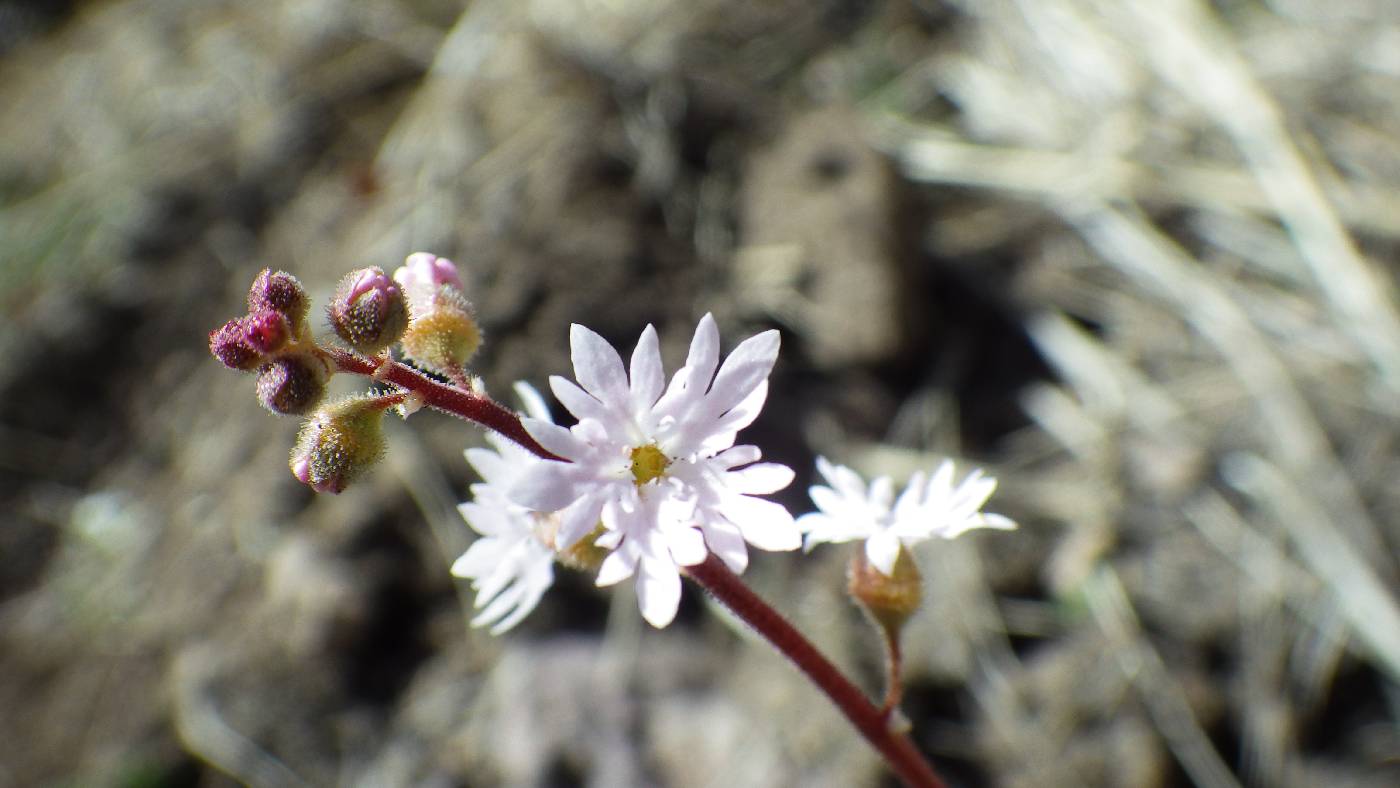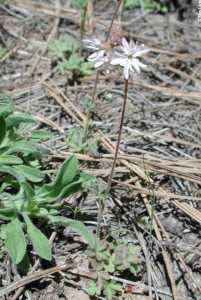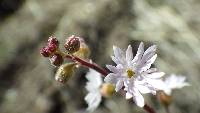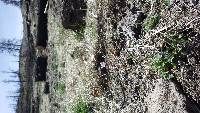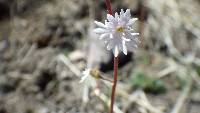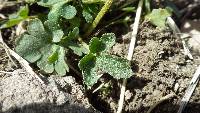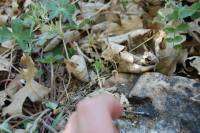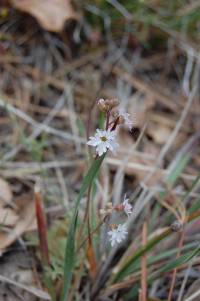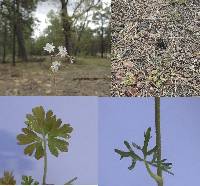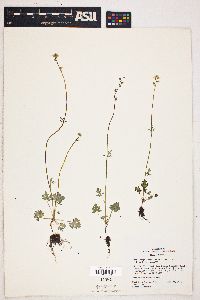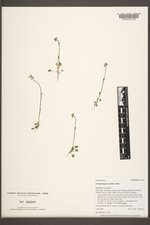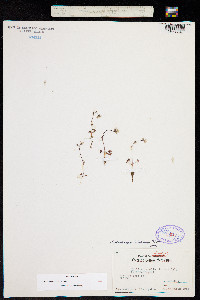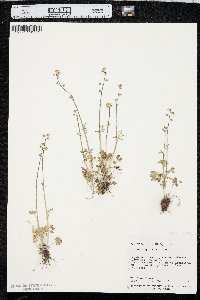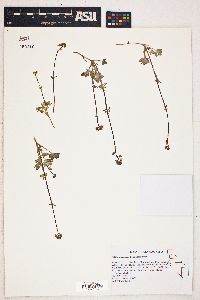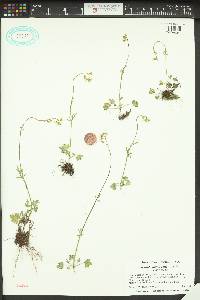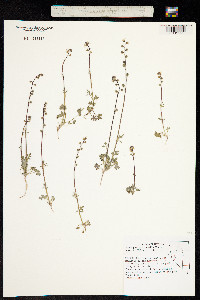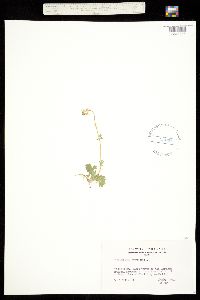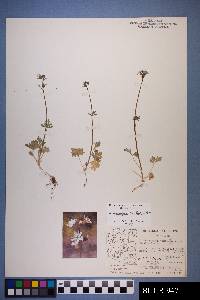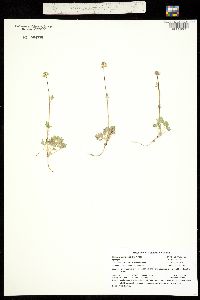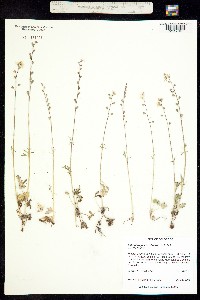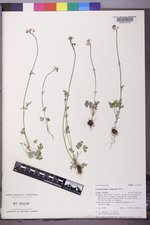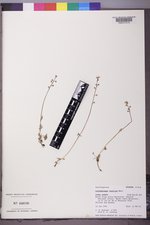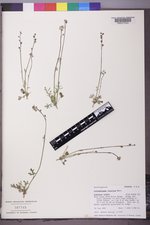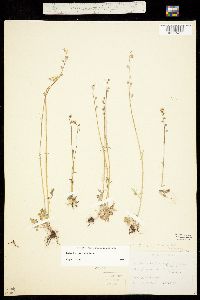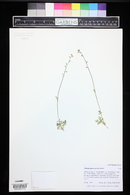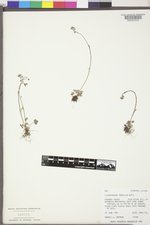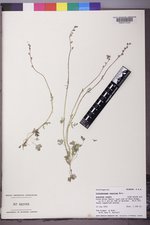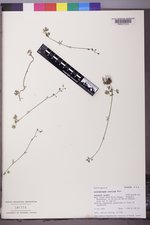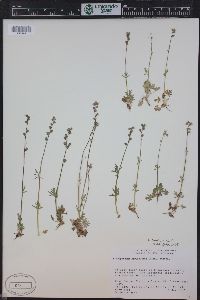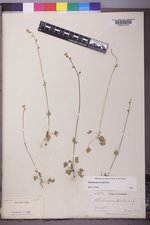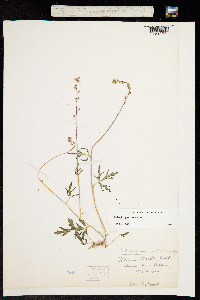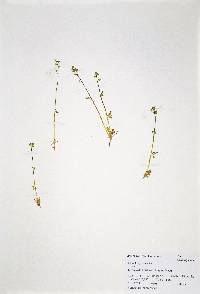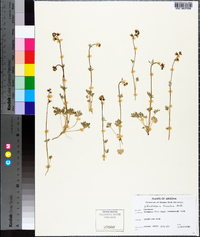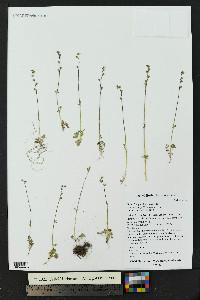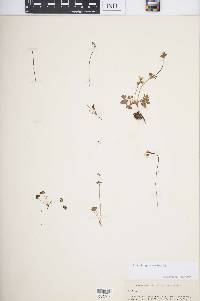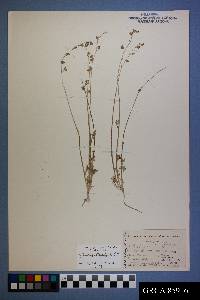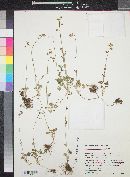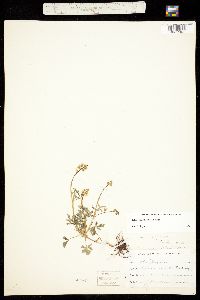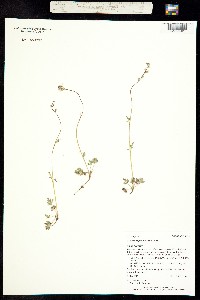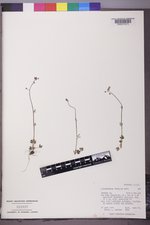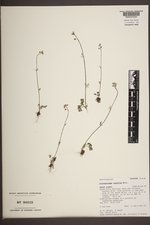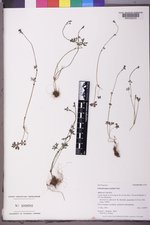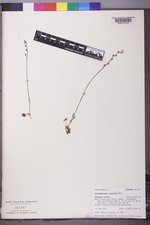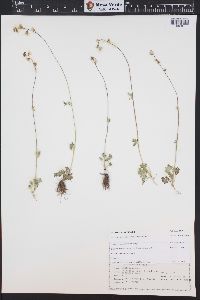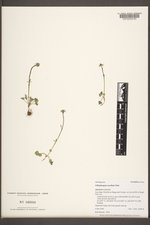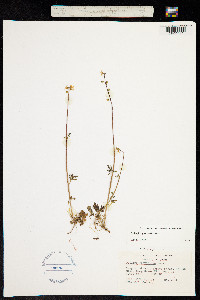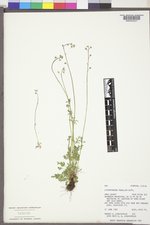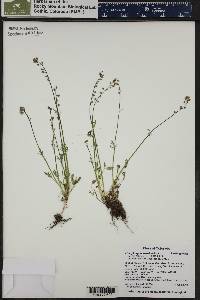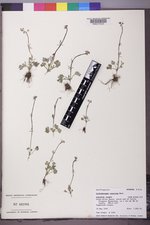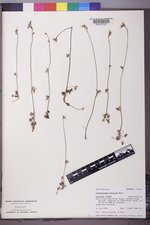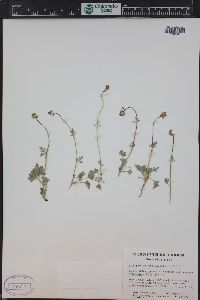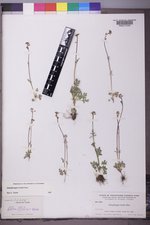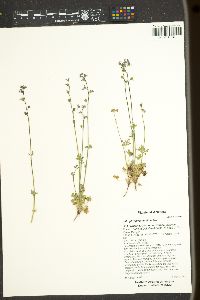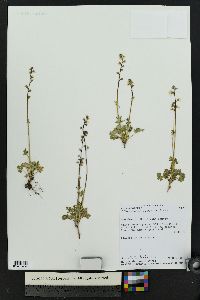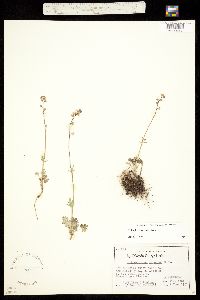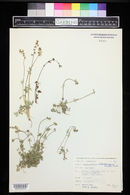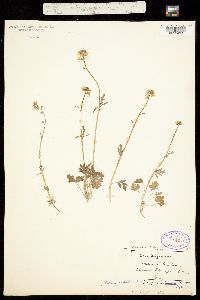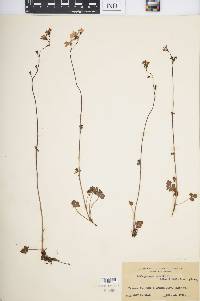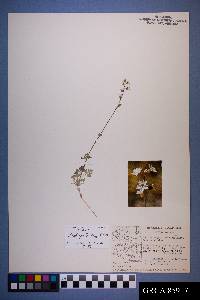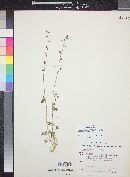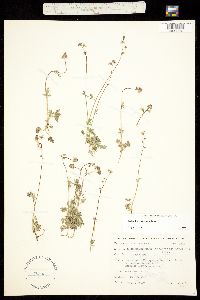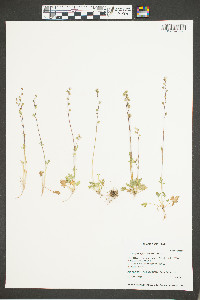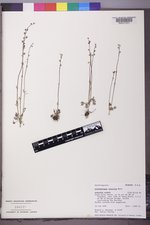
|
|
|
|
Family: Saxifragaceae
slender woodland-star, more...Slender Woodlandstar
[Lithophragma australe Rydb., moreLithophragma brevilobum Rydb., Lithophragma rupicola Greene, Lithophragma tenellum var. thompsonii (Hoover) C.L. Hitchc.] |
Plants slender. Flowering stems simple, 15-30 cm. Leaves in basal rosette and cauline, basal unlobed, irregularly 3-5-lobed, or digitately lobed, sometimes almost pinnatifid, cauline (2), deeply 3-lobed, appearing pinnatifid, much reduced, more highly dissected than basal; stipules broad, decurrent on petiole base, (margins fimbriate); petiole to 8 cm; blade light green, orbiculate, (base hastate), surfaces sparsely hairy. Inflorescences 1-5, (compact), erect, 3-12-flowered racemes, simple, (10-12 cm). Pedicels shorter than hypanthium. Flowers persistent, not fragrant, slightly pendulous; hypanthium campanulate or hemispheric, becoming elongate-campanulate in fruit, open at throat; sepals erect in bud, widely spreading after anthesis, triangular; petals (exserted), widely spreading, pink, sometimes white, ovate, narrowly clawed, palmately 5-7-lobed, (sinuses extending 1/3-1/2 distance to base), 3-7 mm, ultimate margins entire; ovary to 1/2 inferior; styles exserted slightly in fruit; stigma papillae in narrow subapical band. Seeds 0.6-0.7 mm, smooth or wrinkled. 2n = 14, 35. Flowering (Feb-)May-Jun(-Aug). Sagebrush desert in mountainous regions or high plateaus, dry, open forest, meadows, grasslands, and shrublands, sometimes in mesic subalpine habitats with Lithophragma parviflorum and L. glabrum; 1200-3000(-3400) m; B.C.; Ariz., Calif., Colo., Idaho, Mont., Nev., N.Mex., Oreg., Utah, Wash., Wyo. Lithophragma tenellum usually occurs on the eastern side of the Cascade Mountains and in the Rocky Mountains, Nevada, and Utah into western North America. Taxonomy of Lithophragma tenellum is poorly understood because there are few collections from widely divergent geographical areas. The northwestern population (Washington, British Columbia) has been separated as a distinct species (L. thompsonii) based on the extent of the basal leaf lobation, which often shows considerable variation in all species. However, other populations in the Rocky Mountains, Nevada, and Utah have been observed with this lobation, as has Washington-British Columbia material having the more typical leaf form.
Plant: perennial herb Leaves: blades 0.5-3 cm long, deeply 3-lobed to compound, the lobes further lobed to crenate; petioles 1-7 cm long INFLORESCENCE: racemes, 6-35 cm tall Flowers: actinomorphic; 3-12; pedicels 3-10 mm; hypanthium spheric to campanulate, part fused to ovary shorter than free part; sepals triangular, green, erect; petals 3-8 mm, longer than sepals, ovate, 5-7 lobed, white to pink Fruit: FRUITS 3-valved; SEEDS smooth Misc: Vernally moist meadows, slopes, open forests; below 2750 m (9000 ft); Apr-Jun REFERENCES: Elvander, Patrick. 1992. Saxifragaceae. Ariz.-Nev. Acad. Sci. 26(1)2. General: Perennial, 5-40 cm tall; stems 1 to several, simple, slender; herbage sparsely to densely glandular- puberulent; rhizomes slender, with bulbils. Leaves: Basal and cauline, alternate, basal blades sub-orbicular in outline, deeply 3-lobed to compound, 0.5-3 cm long, the middle lobe largest, all lobes again 1-2 times lobed, cauline blades mostly 2, similar, smaller, more dissected, appearing pinnatifid, the lobes linear; stipules of the cauline blades fringed along the margin; petiole of the basal blades 1-7.5 cm long, usually shorter on the cauline blades. Flowers: Inflorescence a panicle, initially narrow, becoming lax and often secund, glandular-puberulent; flowers radial to more-or-less bilateral, campanulate to urn-shaped, 3-6.5 mm long; pedicels 1.2-6.5 mm long, sometimes reddish; hypanthium glandular-puberulent, green to pinkish or reddish; sepals 5, erect, unequal, oblong-ovate, 1-3.3 mm long, white to pink or red with green tips, villous, the hairs crinkly, white; petals 5, linear to filiform, 2.8- 5.8 mm long, white; stamens surpassing the sepals, usually as long or longer than the petals; styles 2, 2-5 mm long, surpassing the sepals with maturity; flowers May-September. Fruits: Capsule, opening apically by 3 valves; seeds numerous, smooth or wrinkled, brown. Ecology: Vernally moist meadows, slopes, ponderosa pine forests; 1500-2700 m (5000-9000 ft); Apache, Coconino, Gila, Maricopa, Mohave, Navajo, Pinal, and Yavapai counties; western Canada, western and southwestern U.S. Notes: The jagged petals of L. tenellum are well exserted from the floral cup and are striking in the field. Editor: Springer et al. 2008 |
|
|
|
This project was made possible in part by the Institute of Museum and Library Services [MG-70-19-0057-19].
Powered by Symbiota

